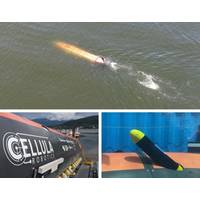
Hydrogen Fuel Cell Powered AUV Demonstrated
was the first of its kind and demonstrated near real-time, over-the-horizon communications from a submerged AUV.The demonstration was observed by representatives from Trusted Autonomous Systems (TAS), the Royal Australian Navy, Royal Canadian Navy, Defense Research Development Canada (DRDC), Defense Science & Technology Group (DSTG Australia) and the Minister of State for Trade, Vancouver-Fraserview, George Chow, as part of Cellula's ongoing work with TAS' SeaWolf program. TAS is Australia's first Defense Cooperative Research Center.Built on a research and development project originally
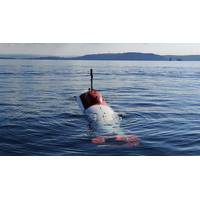
UK’s Test XLUUV Demonstrates Obstacle Avoidance Capabilities
demonstrated advanced underwater obstacle avoidance technology, as part of the first phase of the UK’s Defense and Security Accelerator’s (DASA) ‘Uncrewed Underwater Vehicle Testbed – Opportunity to Integrate’ competition, run jointly with the Royal Navy and the Defense Science and Technology Laboratory (Dstl).Vigilant, developed by Wavefront and manufactured and commercialized by Sonardyne, is a navigation and obstacle avoidance sonar for ships, uncrewed surface vessels (USVs) and underwater vehicles. It provides crews with automated long-range detection of objects
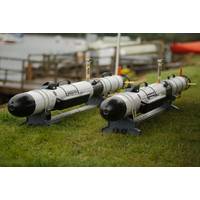
Sonardyne, SeeByte Advance UMS Navigation and Autonomy
Sonardyne and SeeByte won a UK Defense Science and Technology Laboratory (Dstl) funding to enhance and extend the future operational capability of autonomous and remotely operated systems in battlespace domains.The collaboration is the phase two of the UK’s Defence and Security Accelerator (DASA)’s Autonomy in Challenging Environments competition and builds on the work both organizations undertook in Phase 1.Sonardyne underwater positioning system will be teamed with SeeByte’s adaptive, communication-aware, robotic behavior developed for its autonomy system Neptune to allow the UMS
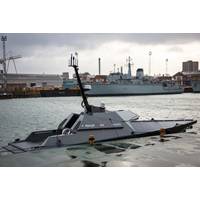
UK Navy Experimenting with New Autonomous Vessel
compliance, new missions, new payloads and the role that a USV can play in complex operations and within the future fleet," said Commander Antony Crabb, NavyX team leader.The vessel is derived from technology firm L3Harris’ Mast-13 vessel, which for the past 18 months has been operated by Defense Science and Technology Laboratory (Dstl) on a series of trials with the Royal Navy. The Royal Navy said Mast-13 proved the value of USVs during experimentation in Norway last year when it was integrated with HMS Albion for Autonomous Advance Force 3.0. There it was controlled remotely, including
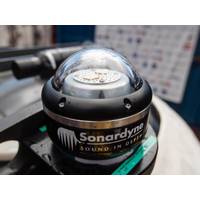
Austrlia DST Chooses Sonardyne's BlueComm
Australia’s Defense Science and Technology Group (DST) has acquired a BlueComm undersea communications system from Sonardyne International Ltd. as part of its ongoing program in maritime autonomous systems (MAS).BlueComm is the only commercial-off-the-shelf (COTS) technology that enables wireless transmission of high bandwidth tactical data, including video, over ranges of a few tens or even hundreds of meters, at rates of up to 10 megabits per second.With it, forces can vastly increase the communications capability of their underwater systems to drive faster, safer and better-informed decision
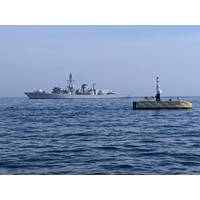
Sonardyne Tests Autonomous Vehicles Navigation for UK MOD
, we have shown we can overcome this challenge, providing a continuous and resilient navigation in denied environments capability that will be ideally suited to challenging operations such as mine-counter measures (MCM).”In total, 21 contracts were awarded by DASA, on behalf of the UK’s Defense Science and Technology Laboratory (DSTL), amounting to £2.1 million ($2.6 million) in funding. The awards are part of the Autonomy in a Dynamic World competition, launched last year, which aims to address factors that affect the military effectiveness of current autonomous technologies.DASA project
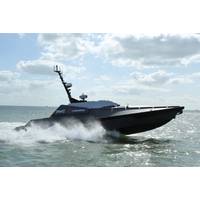
Royal Navy taps Autonomous Vehicles
the United Kingdom’s Royal Navy.The Maritime Autonomy Surface Testbed (MAST) 13 is a 13-meter (41-ft.) long high-speed system capable of fully autonomous navigation. The ASV uses L3Harris’ ASView proprietary autonomous control system and advanced algorithms developed for the U.K.’s Defense Science and Technology Laboratory (Dstl).Designed, built and commissioned by L3Harris’ Unmanned Maritime Systems team based on the south coast of the UK, MAST 13 was officially launched on September 11th at DSEI in London.The system carried out unmanned surveillance and force protection in the
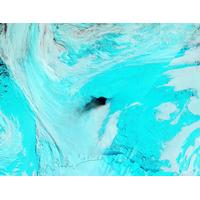
Robotic Data Help Explain Mysterious Holes
and Casey Brayton at the University of South Carolina, who initiated her work in the project as part of the Summer Undergraduate Research Fellowship (SURF) program at Scripps.SOCCOM is funded by the National Science Foundation. Campbell was supported by the Department of Defense through the National Defense Science & Engineering Graduate Fellowship program. Additional funding is from the NSF, the National Oceanic and Atmospheric Administration, UW, and Scripps Oceanography.– Adapted from University of Washington
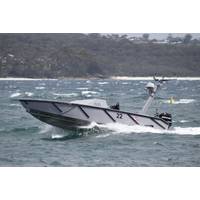
Autonomy: L3 ASV, Dstl Complete Demos
L3 ASV announced the completion of a series of demonstrations at the Australian Defense Showcase, Autonomous Warrior 18.In support of the Defense Science and Technology Laboratory (Dstl), L3 ASV operated a 9-m vessel outfitted with autonomous navigation capability for reconnaissance, interdiction and patrol tasks.The vessel, dubbed MAST-9, operated in fully autonomous mode, including COLREG aware collision avoidance, navigating the waterways at speeds of up to 40 knots, for over 80 hours, across the two-week event. MAST-9 successfully executed seven different task types comprising loiter, shadow



 February 2024
February 2024





